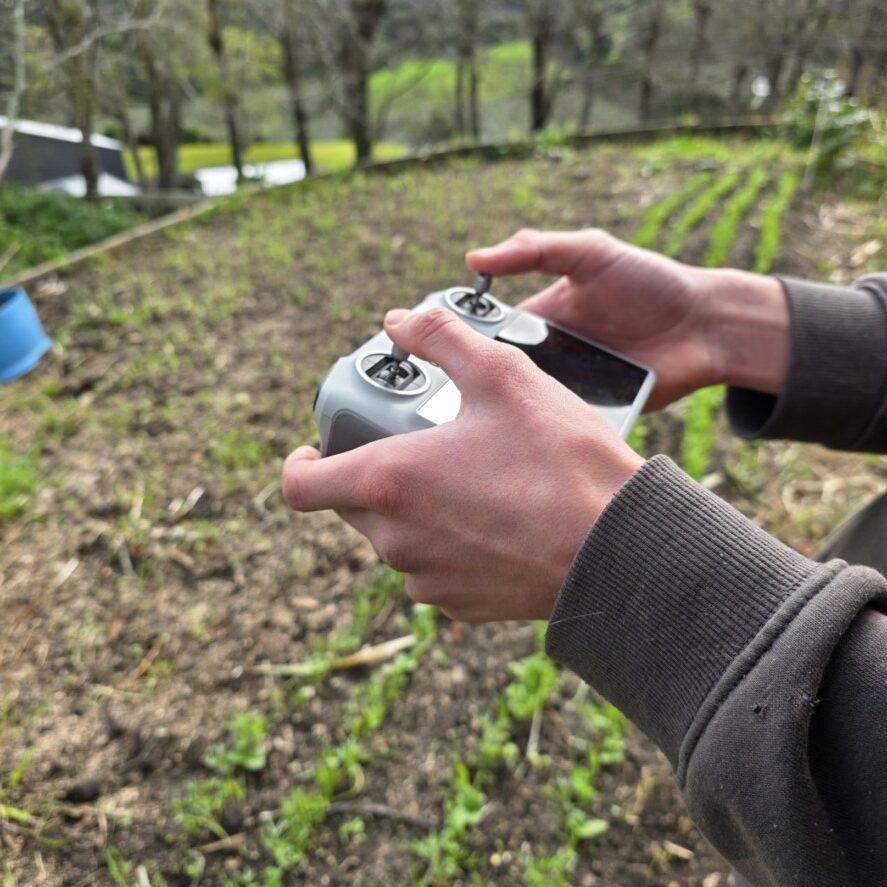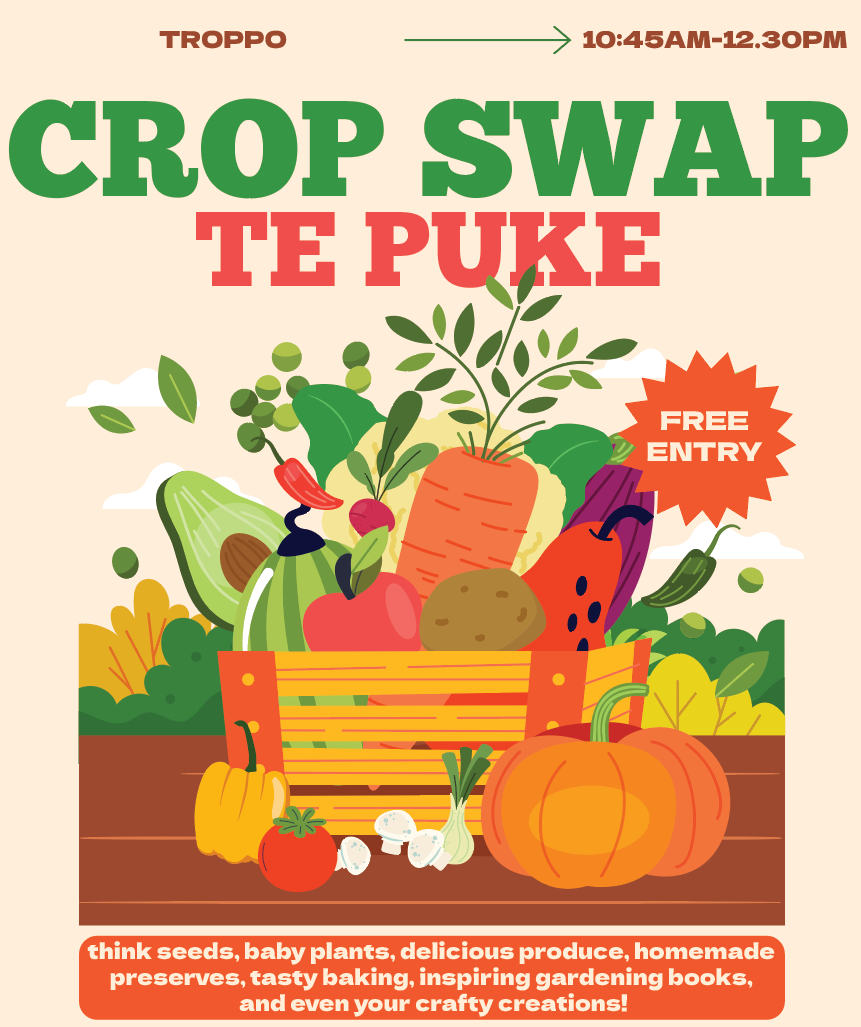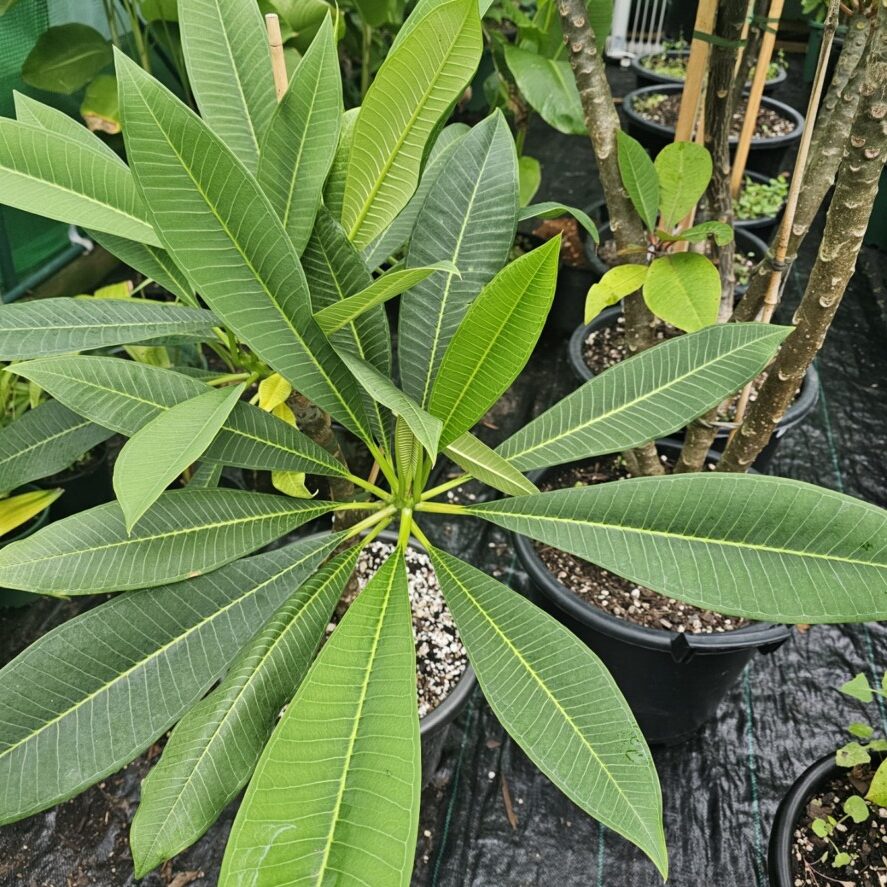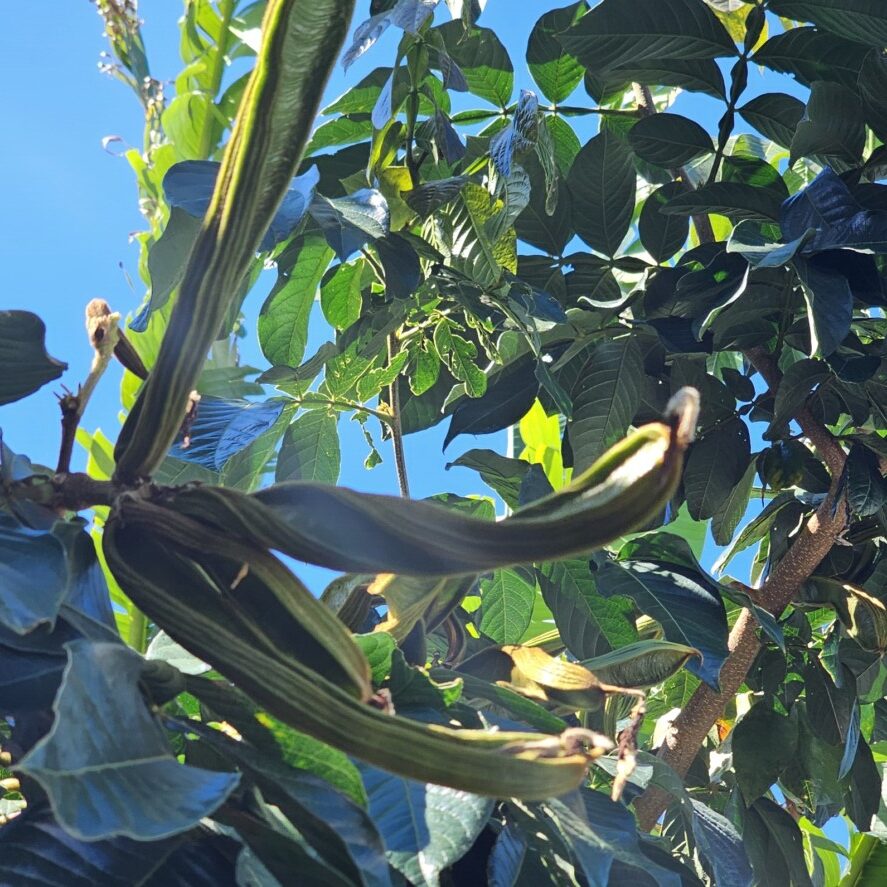
Blog
A Day of Transformation: Diving Deep into the Te Puna Food Forest Install
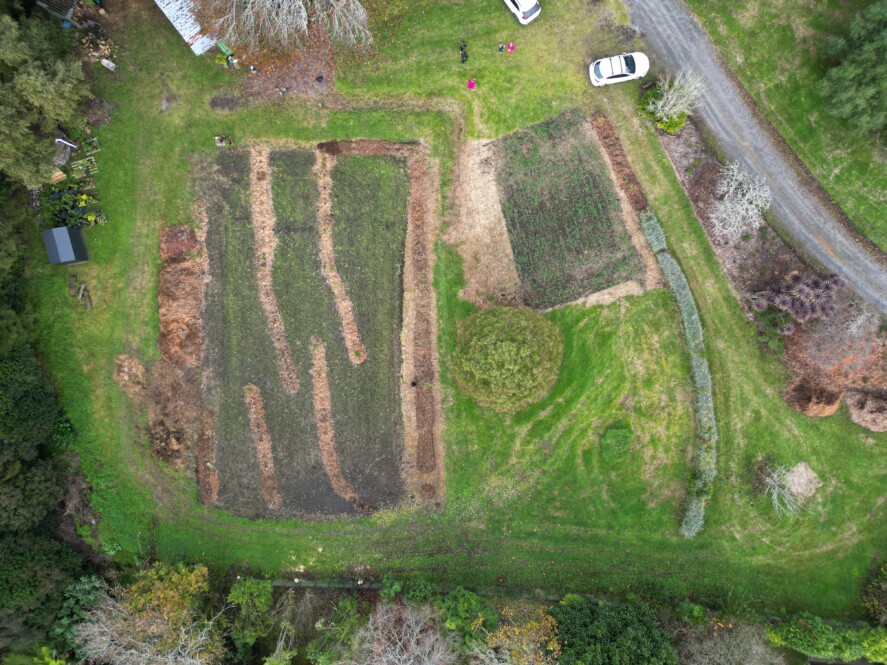
Today, the air in Te Puna buzzed with excitement and the promise of a greener future as the Food Forests Tauranga Group hosted a highly anticipated Food Forest Install at Lindsay and Scotty’s picturesque property. This wasn’t just a planting day; it was a masterclass in ecological design, transforming a patch of land with the ambitious goal of establishing a thriving food forest, with over 450 plants finding their new homes.
Guiding us through every step was Lindsay, a horticultural consultant whose expertise illuminated the entire process. Her insights were invaluable, making the experience not only hands-on but incredibly educational. The day kicked off with a popular plant swap table, a treasure trove of free plants and seeds where attendees eagerly traded knowledge and greenery, discovering a wealth of possibilities for their own gardens. Soon after, the group moved to the main installation area, ready to dig in and bring the food forest vision to life, with a property tour following to showcase existing established plants and projects.
Key Learnings from the Te Puna Food Forest Install:
The installation was a carefully orchestrated dance between rapid-growing support plants and a vast array of food-producing species, many nurtured by Lindsay herself.
Building the Foundation: Support Plants:
A significant focus was placed on fast-growing support trees, primarily various Eucalyptus species like Eucalyptus nitens, Eucalyptus globoida, and Eucalyptus ovata (swamp gum). These were chosen for their remarkable growth rate, their ability to provide essential biomass and shelter, and their role in quickly establishing that coveted “food forest look.” Eucalyptus ovata particularly shone for its suitability in boggy areas. We learned about the strategic decision to plant these support trees with very tight spacing – a technique designed to achieve rapid shelter and biomass production. Other vital support players, such as nitrogen-fixing pigeon peas, were also incorporated for their quick growth.
A Feast for the Future: Food-Producing Plants:
The diversity of food-producing plants integrated into the new forest was truly impressive. We saw cherimoya, various stone fruit (including Morepark apricots and intriguing unknown varieties from Central Otago), flat bearings, pineapple chilies, jackfruit, a friend’s range of citrus types (Villafranca lemon, Meyer lemon, Bearss/Tahitian lime), figs, dwarf mulberries, hybrid oak leaf and mountain pawpaw crosses, feijoas, tamarind trees, and bananas. The discussions around propagation from seeds and cuttings offered valuable takeaways for everyone.
Strategic Planting for Success:
Optimal planting times were a key topic, with Lindsay highlighting the preference of stone fruit for cold temperatures for sprouting. The orientation of rows was also emphasized, with northwest or north-south facing layouts recommended to maximize sun exposure throughout the year. Lindsay’s experimental approach to plant spacing, ranging from 50 cm to 1 meter, with some areas earmarked for direct seeding to create dense ground cover, showcased innovative strategies.
Battling Back: Soil Management and Weed Control:
The property had a history of extensive environmental weeds – privet, cherry, ivy, agapanthus, Japanese honeysuckle, ladder fern, tradescantia, and woolly nightshade were just some of the formidable foes. Significant effort had clearly been dedicated to their management, with strategies like cutting and pasting stumps to prevent regrowth. The strategic use of ground covers, including nitrogen-fixing plants like clover and beneficial species such as oregano and cow parsley Alexander, was vital for weed mitigation and improving soil health. For initial establishment and control of aggressive grasses like kikuyu and bahia, a pragmatic approach involving a one-off establishment spray of glyphosate was employed – a realistic concession given the challenges of working full-time.
Mitigating the Chill: Frost Protection:
The decision to plant support trees very tightly and to delay the planting of many valuable food trees until warmer springtime was a direct response to unexpected widespread frost experienced on the property. Palm trees, such as queen palms and date palms, were also incorporated for their emergent structure and their ability to mitigate frost by providing canopy without creating excessive shade.
Looking Up: Canopy Management:
The long-term vision for the food forest includes maintaining different canopy strata, ensuring that all productive trees receive optimal conditions. Larger trees like the Eucalyptus and palms will contribute to the upper canopy, offering shelter while allowing ample sunlight to reach the lower-growing plants.
Beyond the New Install: A Property Unveiled:
Beyond the bustling new installation, attendees had the opportunity to tour existing features on the property. We admired an impressively tall avocado tree, renowned for its creamy, high-quality fruit. There was also a fascinating native stream/spring restoration project, affectionately dubbed “Narnia,” which is undergoing dedicated revegetation efforts.
Lindsay’s Transparent Expertise:
Lindsay, as a horticultural consultant, brought a wealth of knowledge and practical experience to the event. Her transparency was refreshing, openly sharing insights, including lessons learned from challenges – jokingly adopting a “do as I say, not as I do” approach regarding her own impatient planting tendencies!
Cultivating Community: Sharing and Connection:
The event truly championed community sharing. Participants were encouraged to bring dormant hardwood cuttings (like figs, mulberries, grapes, currants, gooseberries, and elderberry) as well as any surplus plants or seeds they wished to share. The swap table served as a vibrant hub for this exchange and for learning about the diverse plant life suitable for the region.
It was truly inspiring to witness the substantial transformation the property has undergone in just six months, overcoming a history of neglect and invasive weeds. While ongoing challenges, such as the persistent battle with environmental weeds and managing a significant rat population, remain, the progress made is undeniable. For those curious, there may even be drone footage captured during the installation, offering a unique aerial perspective on the day’s incredible work.
What are some common challenges faced when establishing a food forest?
Establishing a food forest presents several challenges, including managing environmental weeds like privet, cherry, ivy, and woolly nightshade, which can quickly take over. These invasive species often require persistent effort, including cutting and pasting with herbicides, as simply cutting them down leads to vigorous regrowth. Additionally, dealing with pests like rats that can strip fruit trees, and protecting young plants from local wildlife like Pukekos, requires proactive measures such as trapping and protective coverings. The initial phase also involves significant physical labor for clearing and preparing the land, especially when dealing with dense, felted weed mats or large, established weed trees.
How are different eucalyptus varieties utilized in this food forest system?
Several eucalyptus varieties serve specific support roles in this food forest. Eucalyptus nitens is highly favored for its vigorous growth and ability to provide quick biomass and shelter, making it ideal for the early stages of a food forest, especially in windy areas. Eucalyptus ovata, or swamp gum, is specifically chosen for boggy or wet areas as it thrives in such conditions, unlike other eucalyptus that would suffer from root rot. While Eucalyptus globosa is also mentioned, it’s noted to be less tolerant of consistently wet feet compared to ovata. These fast-growing trees are often used for “chop and drop” methods to rapidly build soil and create the desired food forest aesthetic.
What strategies are employed to manage weeds and improve soil health?
Weed management and soil improvement are integral to the food forest’s success. Initial clearing may involve using herbicides like glyphosate for stubborn environmental weeds, as it has a short half-life and is broken down by microbes in the soil. Beyond that, the long-term strategy focuses on cover cropping and establishing living ground covers. Nitrogen-fixing plants like clover, as well as other beneficial ground covers like cow parsley Alexander, are used to outcompete weeds and enrich the soil. The plan also includes rolling and crimping cover crops to create in-situ mulch, thereby reducing the need for constant weeding and promoting a healthy soil ecosystem.
What is the role of “support trees” in a food forest, and what examples are given?
Support trees are crucial for the establishment and growth of other food-producing plants in a food forest. They provide fast-growing biomass for “chop and drop” mulching, offer shelter from wind and frost for more sensitive plants, and contribute to soil health, often by fixing nitrogen. Examples include various eucalyptus species (nitens, globosa, ovata), which grow rapidly and provide significant biomass and shelter. Other support plants mentioned are pigeon peas (Cajanus cajan), known for their fast growth, nitrogen-fixing abilities, and natural die-back after a few years, making them a temporary yet effective support.
How is the food forest designed to be aesthetically pleasing and functional?
The food forest design aims for a balance of aesthetics and functionality. Instead of straight rows, the layout incorporates “meandering” lines that obscure views to neighboring properties, creating a more natural and labyrinthine feel. This also makes the property feel larger and more immersive. While practicality dictates the strategic placement of support trees for shelter and biomass, the design ensures that paths and sections like a planned “grape escape” (a room made of grapes) integrate living structures for enjoyment and productivity. The owner also considers the visual impact of structures like the greenhouse, opting for a more appealing design that functions as a “sun room extension” rather than a purely utilitarian poly-tunnel.
What types of fruit trees and other plants are being cultivated or propagated?
A wide variety of fruit trees and other plants are being cultivated and propagated. Fruit trees include cherimoya, a friend’s various citrus (Villafranca lemon, Meyer lemon, Bearss lime, Tahitian lime), avocados (Scotty’s Uncle’s project), fig trees (including Panache), and Chilean guava. Propagation efforts focus on native plants through cuttings, seeds, or division. There’s also mention of specialized plants like Montinoa Grandiflora, jackfruit, American pawpaw, and even hybrid oak leaf and mountain pawpaws, and other edible plants like sugarcane, lemongrass, and Jerusalem artichokes (sunchokes) are planned for inter-row planting and biomass.
What are the plans for dealing with frost and other environmental stresses?
The owner is strategically planning for frost and other environmental stresses, especially after experiencing unexpected widespread frost. A “very tight planting” of support trees, such as eucalyptus, is being used to provide rapid shelter for more delicate fruit trees. Deciduous trees will be planted around citrus to offer summer cover while allowing winter sun when citrus are producing. Additionally, sensitive plants like inga beans and pigeon peas are being held in a greenhouse or given protective covers until warmer, drier spring conditions arrive. The design of the food forest, with its dense plantings and emergent tree structures like queen palms, also aims to mitigate frost and provide a protective canopy.
What steps are being taken to control rodent populations affecting the fruit trees?
Controlling rodent populations is a significant concern due to their impact on fruit production. The owner mentions that rats have been observed stripping fruit trees, including fully loaded avocado trees, before they can be picked. Active measures include setting traps, with one individual catching approximately 40 rats in a month, leading to a noticeable decrease in their daytime activity. There’s also a discussion about acquiring more advanced, self-resetting kill traps that can handle multiple rodents and even possums, ensuring continuous pest control to protect the burgeoning food forest.
Detailed Briefing: Establishing a Food Forest and Managing Invasive Species
This briefing synthesizes key themes, strategies, and challenges discussed across the provided audio excerpts regarding the establishment of a food forest and the persistent battle against invasive species. It highlights plant choices, land management techniques, and the overall philosophy of the garden’s development.
I. Food Forest Design and Plant Selection
The core objective is to create a multi-layered food forest system, focusing on rapid growth, biomass production, and a visually appealing, meandering layout rather than rigid straight lines.
- Support Trees and Biomass Production:
- Eucalyptus varieties are central to the initial establishment, specifically Eucalyptus nitens, Eucalyptus globoida, and Eucalyptus ovata (swamp gum). They are chosen for their rapid growth, excellent biomass production for “chop and drop” mulching, and their ability to provide quick shelter. As the speaker notes, “They grow really fast, good biomass, shelter. Um, I’ve planted a ridiculous amount because I need shelter fast.”
- Eucalyptus ovata (swamp gum) is particularly suited for “boggy areas” as it “does like wet feet.” In contrast, Eucalyptus globoida “doesn’t like wet feet,” and Eucalyptus nitens can tolerate some wetness but “not long periods.”
- These support trees are temporary in some cases; some eucalyptus “might only be in the system for like two years,” serving their purpose to establish the environment before being pruned or removed. The speaker emphasizes their role as “use and abuse to get the ground make the soil, get the ground cover while the other ones are sheltered from the wind.”
- Pigeon peas (Cajanus cajan) / Toor dal are planned as fast-growing, nitrogen-fixing support plants. They grow quickly (3-4 meters) and naturally die back after a few years, making them easier to manage than persistent eucalyptus. They are also edible, being “the most consumed legume worldwide.”
- Ake ake is Dodonaea viscosa ‘purpurea’ (although we do have a fair bit of Pseudopanax sp.)
- Queen Palms are utilized for “mitigating frost and keeping that canopy without taking a lot of sun” due to their tall, skinny nature and fast growth, providing “emergent structure” and cover.
- Productive and Edible Plants:
- A wide variety of fruit trees and edible plants are being incorporated, often propagated from cuttings or seeds.
- Cherimoya are grown from seed, with the speaker noting their versatility to be kept smaller or grow into large trees (5-6 meters). They also “cop well.”
- Avocados are a focus, with experimentation in “head height avocados” grown in a “wide V. shaped” to maintain manageable size. Grafting is also discussed as a method to improve production or introduce new varieties.
- Citrus varieties mentioned include Villafranca lemon, Meyer lemon, and Tahitian lime. Deciduous support plants will be planted around citrus to allow for “weaker sun” in winter when citrus produce, providing summer cover when “it’s raging.”
- Elderberry is noted as “quite easy to root” and capable of sending out runners to “take over.”
- Pineapples are being incorporated, with the speaker noting their hardiness.
- Jackfruit and Tamarind trees are also present, though young and requiring shelter.
- Bananas are planned for spring planting, with an awareness that they dislike “wet feet constantly” and root disturbance. Varieties include a “seedy pink” ornamental banana and potentially “Mizzy Luckies.”
- Oakleaf Papaya and Mountain Pawpaw crosses are being grown from seed, with the speaker cautious about the invasive “incredible root structure” of the oakleaf papaya.
- Other plants mentioned include: parsley (Italian), bato (possibly Batocera sp.), strawberries, ground apple, chili (from the islands), Montinoa Grandiflora, Chilean guava, pomegranate (though not in this system), and giant cannas.
- Ground Cover and Weed Mitigation:
- The importance of “living cover” is stressed, as “the ground wants covering. It needs roots in it.”
- Nitrogen-fixing ground cover is a primary strategy, including clover (white and crimson), lupins, daikon radish, and black oats.
- Cow parsley Alexander is being experimentally used as a “living border,” hoped to “outcompete cooch grass.”
- The plan is to “roll it and terminate it that way,” crimping the cover crop and then planting directly into the resulting mulch.
- Strawberries are also noted for their ground cover capabilities.
- “Lobster plant” (a ground cover with purple flowers) is highlighted as an effective alternative to ivy and honeysuckle.
- Layout and Aesthetics:
- The design emphasizes a “meandering vibe” with “obscured and overlapped” lines to avoid a “straight lines going down where you can just see straight to the neighbor.”
- A “grape escape” is planned, where a wider row will accommodate a “room made out of grapes.”
- “Ridiculously tight plantings for support trees” are intentionally used to achieve fast shelter and biomass.
- “Different strata” or layers (80%, 50% canopy coverage) will be maintained through pruning.
II. Challenges and Management Strategies
The property is heavily impacted by invasive environmental weeds, requiring significant effort and a pragmatic approach to management.
- Invasive Species Dominance:
- Wineberry (Rubus phoenicolasius), also known as wine raspberry or Japanese wineberry, is a highly aggressive invasive species that poses a significant threat to ecosystems
- The property is described as an “English weed garden,” with an overwhelming presence of “privet and cherry and ivy and stuff” and “woolly night shade.”
- The speaker recounts spending an entire day clearing only “two square meters” of a hedge due to the density of ivy and thick “felted weed mat.”
- Neighboring properties are also a source of weed seeds, particularly ivy.
- Weed Control Methods:
- Chemical Application (Glyphosate): The speaker, initially “anti-spraying,” has adopted glyphosate for environmental weeds. The rationale is based on understanding its science: “it’s got a halflife of 76 days. It doesn’t move through the soil. It doesn’t move by water. It strongly sticks to soil particles and is broken down by microbes.” However, it is explicitly stated, “I don’t want to spray it on my food. I still don’t believe that.”
- “Cut and Paste”: This method is crucial for woody weeds like privet and cherry, as simply cutting them down only leads to more vigorous regrowth. The importance of pasting stumps is emphasized: “paste your stumps, people. It doesn’t do anything to cut it down. They just grow back with more.”
- Manual Clearing: Tools like a “block and a hex fencing iron” are used for manual removal of stubborn weeds like agapanthus.
- Cover Cropping and Ground Cover: As mentioned above, dense living ground covers are a long-term strategy to “mitigate weeds” by preventing their establishment.
- Pest Management:
- Rats: A significant problem, particularly with fruit trees. The speaker reports catching “about 40 in the past month” and observes a decrease in daytime rat activity. Plans include acquiring an “automatically resets in bait” trap for multiple kills.
- Pukekos (Swamp Hens): These birds are a threat to new plantings. The speaker has successfully deterred them by “running at them barking like a dog and clapping my hands,” causing them to change their routine and avoid the planted areas. Protectors were also used on some plants as a precautionary measure.
- Mealy Bugs: An “incredible mealy bug infestation” was observed on a Morton Bay fig, with the tree’s latex gumming up the pests.
III. Practical Considerations and Philosophy
- Impatience and Experimentation: The speaker admits to being “impatient and impulsive,” often planting before ideal conditions or full observation: “I should be sitting here and observing for this fully first year. I should just watch and see what’s happening. But I am impatient and impulsive.” Despite being a “horticultural consultant,” a “do as I say, not as I do kind of gardener.” This leads to experimentation with planting densities and methods.
- Source of Materials: Many plants are propagated from cuttings or seeds, highlighting a self-sufficient approach. Free mulch from a neighbor (an arborist) is a significant resource.
- Community and Sharing: Plant trades are a regular occurrence, with people encouraged to “come in and take something and try growing something different.” The “annual tree croppers Hamilton branch sale” is mentioned as a good source for unusual plants and knowledgeable people.
- Property History and Features: The property was previously a “crammed” 400 square meter garden in Papamoa with 30 fruit trees.
- A spring is present on the property, contributing to boggy areas.
- The house has an older “tongue and groove” aesthetic, dating to around the 1980s.
- Neighboring properties present challenges with unrestrained dogs (Rottweilers) and environmental weed spread.
- The “world’s tallest kauri” is noted as growing on the property, surprisingly unnoticed until recently.
- Future Plans:A 180 square meter veggie garden plot has been prepared and cover cropped.
- A 4km walking track is planned along the water, incorporating native revegetation efforts in a “little native area that we’re revegetating.”
- A 30 square meter “polyine and timber” greenhouse is planned.
- Learning and Observation: Despite the impulsiveness, there’s a strong emphasis on continuous learning, from observing plant behavior (e.g., male vs. female plant changes) to understanding soil conditions and pest interactions. The goal is to build a thriving, productive, and resilient food forest ecosystem.
#FoodForestsNZ #TePunaFoodForest #PermacultureNZ #SustainableLiving #FoodForestInstall #HorticultureNZ #CommunityGardening #RegenerativeAgriculture #PlantingDay #EcologicalDesign




